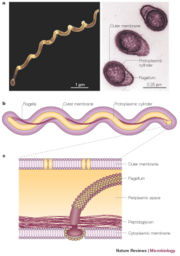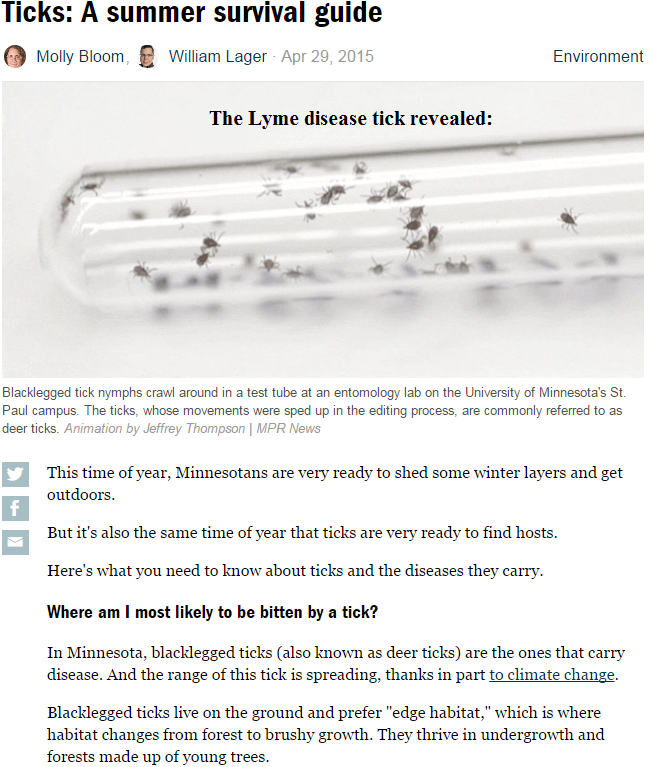The Horror of Lyme Arthritis Explained
Make no mistake about it Lyme arthritis truly is a horror. Striking in most instances suddenly it can be defined as a painful, swollen joint, that causes a stiffness similar to osteoarthritis. The condition occurs most commonly in the late stages of the disease, often several months after the onset but also commonly within only a few days or a week or two of the infection. Nearly half of all individuals who are treated unsuccessfully or who are not drug treated contract the condition.
The disease occurs when the Lyme spirochete invades the joint capsule causing inflammation of the tissue lining of the joints. Unless the condition is reversed the inflammation can cause damage to the cartilage lining and the bony aspect of the joint.
Unlike regular arthritis the Lyme type doesn’t usually last forever. Plus, it often involves a single joint, for instance, a single knee or ankle. It may also involve a single elbow. Or, it may migrate from one joint to the other.
Because of its invasive powers and the toxins it liberates the joint becomes exceedingly inflamed. The pain can be great, unmercifully so. Furthermore, there can be considerable swelling, and the pressure from this swelling increases the degree of agony. The pattern is typical, especially in the knee-joint and its surrounds:


In a similar way it attacks the shoulders and elbows. It even does so in animals, particularly dogs, as described in the following experiment:
Experimental borrelia infection was induced in 62 specific–pathogen-free beagle dogs by exposure to Ixodes scapularis ticks harbouring the spirochaete Borrelia burgdorferi. Clinical signs of Lyme disease occurred in 39/62 dogs, the remaining 23 being subclinically infected. Clinical signs consisted of one to six episodes of transitory lameness with joint swelling and pain, most commonly affecting the elbow or shoulder joints…the dogs remained infected for up to 581 days. At necropsy, gross finding…inflammation…affecting synovial membranes, joint capsules and associated tendon sheaths.
http://www.sciencedirect.com/science/article/pii/S0021997505000083#fig7
Dogs are notoriously resilient. Yet, even these creatures suffer great devastation as a result of the infestation. Of note, the dogs continued to suffer the infection for nearly two years. The natural immunity of these animals was not successful in the least in achieving eradication. As long as the pathogen persisted so did the inflammation and destructive damage in the joints. The spirochete, with its cork-screw apparatus, attacks the linings of the dogs’ joints, corrupting them, leading to the disabling of these animals.
It is surely a wretched pathogen, and its cork-screw physiology allows it to be an exceptional agent for invading the joint tissues. Is it not the most vile, hideous germ of all, derived from nothing other than the most lowly known creatures, mere vermin?
Here is this vermin-source entity, that is from mouse, rat, chipmunk, and other:
What a vile creature it is, this native germ of mice and other animals of the rodent family. Look at it as it screws its way into living tissue. See how it props its vile head and also tail up in the effort to search for attachment sites and food.
It has a suction device on its end which it uses to bore its way into the cell membrane to which it secures itself.

In real life the suction tip can be seen in the photomicrograph with the black background, while it is represented schematically in the image above. How absolutely corrupt it is, how it according to the schematic creates a hole or lesion in human cell membranes for means of attachment. This is what it also does in human joints. No wonder it causes such a vast degree of inflammation and and thus, pain and agony upon invading the joint capsule. It is a kind of pain syndrome never seen before in any other kind of joint inflammation condition.
The germ has been definitively detected in the joint capsule, whether in humans or animals. Also, residual material from the germs, as well as its bizarre, mutated forms, have also been detected. In one mice study the following was noted:
Spirochete antigens can be detected adjacent to ear cartilage in antibiotic-treated…mice….all (artificially infected and) treated mice tested positive for B. burgdorferi by both culture of tissues and direct immunofluorescence staining…
Other investigators determined that there were not only live spirochetes but also a sort of encased or even mummified version. These encased/mummified versions, though to be dead, are held as causing significant inflammation within the joint systems.
Why wouldn’t it cause extreme inflammation and bizarre corruptions? Why wouldn’t it through its treachery lead to joint deformity? See this schematic of this grotesque invader. It has a powering rod through the center, known as a longitudinal flagellum. On the outer element of its spirochete structure is a “slimy coat,” known as a glyoprotein matrix. This is also described as a “biofilm.” The biofilm protects the pathogen from immune attack. The immune system has a difficult time recognizing it, because of this virtually impenetrable protective (stealth) coating.
Just as the dog has great difficult eradicating this tissue invader, so it is true of humans. In humans without medical intervention, the infection persists and can cause destructive damage, including joint deformity. In some cases the Lyme destruction can lead to deformities similar to those seen in that dire condition rheumatoid arthritis. Therefore, there must be every effort to eradicate the infection: at all costs. Too, there must be a decided effort to induce healing in the joint capsule. The healing is necessary for a number of reasons. It is to prevent permanent tissue damage, resulting in moderate or gross deformity, like the deformities seen in rheumatoid arthritis. It is also to strengthen the tissues within the joint, including the cartilage, ligaments, tendon sheaths, and bony components. This is so that these tissues are less vulnerable to Lyme bacillus attack.
What is an ideal protocol to achieve this? It is one which relies upon a combined approach, one aimed at destroying the pathogen, the other to induce healing. It is also one that aims at destroying the pathogen, in part by dissolving its protective elements, including the sticky biofilm. That protocol is as follows:
- crude wild oregano herb plus Rhus coriaria: three capsules multiple times daily
- fatty salmon oil rich in naturally occurring vitamins A and D plus 33 omegas, distilled from the heads of wild sockeye salmon: 5 capsules several times daily
- wild Peruvian cat’s claw, 12:1 concentration: tsp or more daily
- bone activating rubbing oil, topically and internally: for internal use take 10 drops twice daily
- bone activating capsules with wild rosemary, sage, and oregano, along with MCHC: 3 capsules several times daily
- natural, raw burbot/freshwater cod liver oil complex: tsp twice daily
Note: the raw burbot/freshwater cod liver oil complex greatly aids in the rebuilding and regeneration of the bony components of the joints as well as the cartilage itself, as the burbot material is cartilage-rich. When combined with the wild salmon oil there can be great healing induced. The bone activating capsules and oil are a potent adjunct for aiding in the reversal of Lyme-related joint damage and arthritis. Also, while topical treatment is surely an element it is the internal consumption of anti-Lyme supplements which must be regarded as the mainstay in reversing this condition. For relief the bone activating oil complex can be used topically, as often as needed.
Sources:
http://www.jci.org/articles/view/58813


DOES A SPIROCHETTE LOOK LIKE A LONG DEFLATED WORM ; I HAVE FOUND THIS IN MY 11 YEAR OLD BOWELS AFTER GIVING HER LDM 100 AND SAMENTO HAS MANY HERXES AS VOMITING, HEADACHE RUNNY STOOLS,, FATIGUE LEG PAIN. HAVE STOPPED ALL BUT HOPE TO RESUME AFTER RASH GOES THANKS FOR YOUR INPUT CONNIE